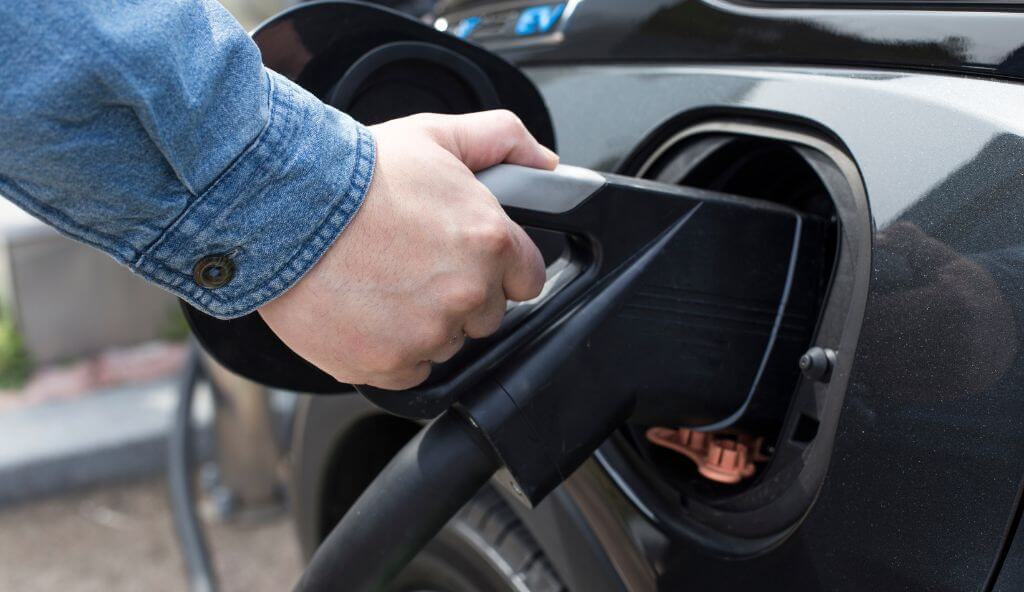Electric vehicle outdoor charging stations - One of the most important aspects of owning an EV is charging it. Using a home charging station to charge your car in a garage isn't always an option, regardless of whether you own your home or rent an apartment. There are a few things you should know before you start outdoor charging, but it is an acceptable technique for charging your electric vehicle. You can use this article as a reference for any inquiries you may have about outdoor EV charging and to make an informed decision about charging outside.
Various Outdoor Charging Station Levels
It's crucial to first describe how at-outdoor chargingelectric vehicle outdoor charging stationsoperate. Outdoor chargingelectric charging stations are divided into various tiers at the most fundamental level. Chargers classified as level one can be connected directly to a conventional power outlet in your house. The majority of electric cars can run on the same 120-volt electricity that powers your outdoors. As previously said, rapid charging stations enable you to connect your car to a regular grounded outlet, like the one in your garage.
Level 1 - Level 1 charging is not nearly as efficient as specific level 2 charging equipment, which is one of the reasons we advise against it. Not that a level 1 charging station won't do the trick; it most definitely will. Your electric vehicle will take significantly longer to charge because level 1 charging is a slow process. The car is unable to use energy in the manner in which it is capable of doing so since the power source being used restricts current draw to 120 volts. As a result, level 1 charging is typically reserved for emergencies or overnight charging of electric vehicles. In an emergency, level 1 charging will provide enough power to charge your automobile, but plan on it taking 10 to 12 hours to fully recharge.
The level 1 technique makes your charging procedure more difficult. You should be aware of how much power you are consuming with level 1 chargers rather than simply plugging in your automobile and utilising it to power the rest of the house. The outlet must be on its isolated circuit with no other electricity being utilised because of the current draw of the car.
Always check your circuit breaker to make sure that whatever power supply you are linked to is on its isolated circuit before employing a tier-one system. If you plan to use a level 1 system as your primary method of charging after buying an electric vehicle, you may need to make changes to your electrical infrastructure. Keep in mind that electricity is challenging and dangerous, and always seek professional advice if you have any questions.
Alternatively, you might upgrade to a level 2 and avoid all the circuit breaker gymnastics that come with a tier-one system.
Level 2 - It is undeniable that a level 2 charging system will simplify your life. A level 2 charging system is better for the battery life of your EV in addition to being a hassle-free, problem-free way to charge it. 240-volt connections are used by level 2 home chargingelectric vehicle outdoor charging stationsto swiftly and effectively power your electric car.
Level 2 charging systems use a different type of plug than level 1 charging units, so they cannot be connected straight to a regular outlet. The main distinction between level 1 and level 2 is 240 volts. The majority of electric vehicles were designed to operate on 240 volts. Electrically powered components, such as the rechargeable battery in an electric car, are restricted by a component known as the capacitor. Consider capacitors as the entrance to a roller coaster at a theme park.
The voltage must fall within a certain range determined by the restrictions set by a capacitor. There is a sweet spot for a current draw that is often the median value determined by the capacitor for electric components that accept and keep a charge. Your electric car can absorb and hold power at an accelerated pace at this sweet spot. A level 2 charging system is the ideal fit for your electric vehicle because it has a median voltage of 240, which is the same as that of your electric vehicle.
Which Charging Level is Ideal for Outdoor Use?
Now that you know how level 1 and level 2 EV charging systems differ, let's talk about which EV charger works best for outdoor charging.
We strongly advise using a level 2 EV charger when it comes to the sort of charger you should use outdoors. Level 1 charging just won't do the trick because of all the unpredictabilities that come with outdoor electric vehicle charging, such as weather, animals, and environmental conditions.
Financially frightening upfront charges include cutting the level 1 cord and getting a level 2 system. The safer choice for outdoor EV charging is to upgrade to a level 2 charger, which will enable you to save a significant amount of time throughout owning your car.
The Benefits of Charging Outdoors
If you park your electric car outside at home, the main benefit of charging outside is that your charger may be closer to your vehicle. Fortunately, outside charging,electric vehicle outdoor charging stationsare water and fireproof and made to withstand all kinds of weather. Ourelectric charging stationshave passed UL certification and testing and are suitable for both indoor and outdoor use.
You wouldn't believe it, but your electric car was designed with adverse weather in mind. When recharging an electric vehicle, the port where the cord connects to the battery flushes and drains. When your level two charging system is linked to your car's battery port, a waterproof seal is produced, assuring a safe and reliable charge even in the hardest conditions. The cord itself is similarly built to reject water. You will be able to charge your car even if it is outside in the rain or snow.
Location for Recommended Charging
The industry advises indoor charging when picking between indoor and outdoor charging for your home. Your charging system connector and your vehicle are shielded from the weather, people, and animals when you charge indoors.
You can buy a specialised enclosure to safeguard your charging equipment if your charging system is situated so that it hangs outside your home. No matter the area in which you reside, taking extra care to lock up your equipment and charger accessories assures that you will always have a charge available.
Weather can speed up the ageing process for outdoor charging systems, although many s proper outdoor charging station customers report continuing use far past the three-year guarantee period. A weatherproof enclosure is not required if you choose to have a new charging system put on the exterior of your home, but it can help preserve the charging station's resell value if you intend to upgrade it in the future.
A level 2 EV charger's ability to be put indoors or outside and have a cable length that can be adjusted to reach wherever your car is parked is one of its many wonderful features. Installing the charging system inside the garage and then purchasing a longer cable that reaches their automobile is one of the most popular methods for outdoor charging. When choosing this configuration, it's crucial to keep in mind to leave your garage door open so that you have enough space to pass underneath the door without being constrained or obstructed. It might be annoying to have to frequently repair cords that have been damaged by things like garage doors, so it's best to exercise caution and keep the cord out of harm's way.
Outdoor electric vehicle charging does not always take place at homes.
The majority of people try to charge their devices overnight using their charging stations, however, occasionally you run out of battery while driving. To go where you need to go in these circumstances, you will have to use a public charging station.
The type of charge your automobile will require must be determined before you may use a public charging station. As you may expect, there are several electric cars kinds, which also means there are numerouselectric vehicle outdoor charging stations available for use. Outdoor chargingelectric charging stationsfrequently feature multiple designated charging areas. Using a high-speed rapid charger can be necessary if your car's battery is nearly empty.
Please be aware that high-speed EV charging stations will only be useful until you get an 80% charge before using them. Your car's battery starts to restrict power flow and intake once it hits 80%. This indicates that if your car has 80% or more of its charge left, you should use a level 2, 240-volt charger to complete the charge.
Benefits of Outdoor Charging Station
1. Help the Air Quality to Get Better
For our bodies as well as the environment, breathing in polluted air has negative health effects. All living things and the sustainability of life on the earth will benefit from any actions we can take as individuals and business owners to improve the quality of the air. Electric vehicles (EVs) are an effective tool in all initiatives to enhance air quality because they emit no pollutants. You are promoting a technology that will make this world a cleaner place to live by providing a charging station at your place of business.
2. Achieve Tax Benefits
Installing an outside EV charging station makes it simpler for you to use an EV for business purposes because it gives you a quick and handy way to charge your company cars. Owning the vehicles oneself has its tax benefits: Buyers of EVs may be eligible for a tax credit under the American Recovery and Reinvestment Act ranging from $2,500 to $7,500, depending on the size of the battery.
The installation of a charging station may also result in tax benefits for your company. If your company instals an EV charging station between January 1 and December 31, 2016, it can be eligible for a tax credit worth up to $30,000 or 30% of the cost.
3. Explain the company's values to the staff.
By installing EV chargingelectric vehicle outdoor charging stationsin commercial buildings, companies may convey to their staff that they value sustainability, responsibility, and innovation. Employees are empowered and encouraged to share the same beliefs. Corporate projects like these serve as examples of how switching to greener energy is both feasible and attainable if everyone plays their part. Additionally, this objective conveys a similar message to prospective clients, enhancing your business's entire brand reputation.
4. Attract and Keep Top-Notch Employees
Employees will greatly benefit from the addition of EV chargingelectric charging stations to office buildings because it will encourage and improve their use of EVs. Consider how long an employee leaves their car in yours. The fact that they might utilise all those hours to charge their car is a big plus, especially for those who might not have access to a charger at home. In regions where EVs are eligible for carpool lanes, this benefit may help shorten travel times. All of this suggests that installing an EV charger could be an effective negotiation tool for luring and keeping top talent. Many businesses already see the benefits of having charging stations, and 74% of Plug-in Electric Vehicle (PEV) owners in the US indicate a significant interest in workplace charging. Additionally, if your business offers in-person customer assistance, chargingelectric vehicle outdoor charging stationsprovide clients with another reason to stop by your location.
Conclusion
All EV owners have the option of charging outside, whether they choose to do so at home or while on the go in a public area. Keep in mind that Level 2 charging systems are a wise investment and ultimately the superior choice if you're looking to purchase a charging station for your house. Before making your final purchase, be sure to select a company with a track record of dependability and excellent client satisfaction.








